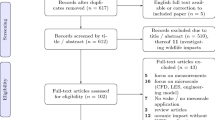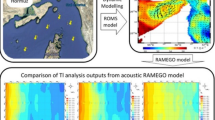Abstract
The problem of designing unique building structures in terms of predicting the climatic characteristics of premises is considered. These facilities include the Surfing Center, which is planned to be built in Moscow. An integral part of the design work is the determination of indoor humidity and the selection of parameters for climate control systems. Within the framework of solving this problem, a technique is developed for modeling the rate of evaporation from the surface of a swimming pool (pool) during active waves. The technique is based on the use of computational fluid dynamics methods in combination with the calibration of the empirical constants of the models according to the known experimental data for the evaporation rate in still water. According to the revised method, a correction factor to the formula of the VDI2089 standard is determined to estimate the rate of evaporation from the surface of the pool for the given wave parameters.





Similar content being viewed by others
REFERENCES
R. Argannikov, “Reconstruction of HVAC system of St. Isaac’s Cathedral,” Sustainable Building Technologies, No. 2, 46–49 (2016). http://zvt.abok.ru/articles/317/Rekonstruktsiia sistemi otopleniia Isaakievskogo sobora. Cited July 22, 2020.
D. M. Denisikhina, “Features of the numerical simulation of air movement inside concert and theater halls,” Naukovedenie, No. 3 (22), p. 81TVN314 (2014).
A. G. Perekhozhentsev, “Solution of heat and moisture exchange tasks in two-dimensional area of the building envelope,” Vestn. Volgogr. Gos. Arkhit.-Stroit. Univ., Ser.: Stroit. Arkhit., No. 39 (58), 35–45 (2015).
W. Tian, X. Han, W. Zuo, and M. D Sohn, “Building energy simulation coupled with CFD for indoor environment: A critical review and recent applications,” Energy Build. 165, 184–199 (2018). https://doi.org/10.1016/j.enbuild.2018.01.046
RBC TV channel. https://sportrbc.ru/news/5ff1ca149a7947cbde756c31
R. Tang and Y. Etzion, “Comparative studies on the water evaporation rate from a wetted surface and that from a free water surface,” Build. Environ. 39, 77–86 (2004). https://doi.org/10.1016/j.buildenv.2003.07.007
C. C. Smith, R. Jones, and G. O. G. Löf, “Energy requirements and potential savings for heated indoor swimming pools,” ASHRAE Trans. 99, 864–874 (1993).
S. O. Hanssen and H. M. Mathisen, “Evaporation from swimming pools,” in Roomvent’90: Proc. 2nd International Conference on Engineering Aero- and Thermodynamics of Ventilated Rooms, Oslo, Norway, June 1990, Session B2, Paper 31.
S. M. Bower and J. R. Saylor, “A study of the Sherwood–Rayleigh relation for water undergoing natural convection-driven evaporation,” Int. J. Heat Mass Transfer 52, 3055–3063 (2009). https://doi.org/10.1016/j.ijheatmasstransfer.2009.01.034
M. M. Shah, “Improved method for calculating evaporation from indoor water pools,” Energy Build. 49, 306–309 (2012). https://doi.org/10.1016/j.enbuild.2012.02.026
M. M. Shah, “New correlation for prediction of evaporation from occupied swimming pools,” ASHRAE Trans. 119, 450–455 (2013).
L. Garbai and R. Santa, “Flow pattern map for in tube evaporation and condensation,” in Proc. 4th Int. Symposium on Exploitation of Renewable Energy Sources, Subotica, Serbia, 2012 (Subotica Tech., Subotica, 2012), pp. 125–130.
Z. Li and P. K. Heiselberg, CFD Simulations for Water Evaporation and Airflow Movement in Swimming Baths (Aalborg Universitet, Denmark, 2005).
Yu. P. Kirillov, V. A. Shaposhnikov, L. A. Kuznetsov, V. S. Shiryaev, and M. F. Churbanov, “Modeling of the evaporation of liquids and condensation of their vapor during distillation,” Inorg. Mater. 52, 1256–1261 (2016). https://doi.org/10.1134/S0020168516110066
Russian Standards Institute. Standard VDI 2089 Blatt 1-1994. Heating, ventilating, water supply, sewage water treatment in indoor and open air swimming pools. Indoor swimming pools. https://www.standards.ru/document/5884404.aspx
Simcenter STAR-CCM+. Engineer innovation with CFD-focused multiphysics simulation https://www.plm.automation.siemens.com/global/ru/products/simcenter/STARCCM.html
D. Butterworth and G. F. Hewitt, Two-Phase Flow and Heat Transfer (Oxford Univ.Press, Oxford, 1974).
D. A. Drew and S. L. Passman, Theory of Multicomponent Fluids (Springer, New York, 1998). https://doi.org/10.1007/b97678
S. Hardt and F. Wondra, “Evaporation model for interfacial flows based on a continuum-field representation of the source terms,” J. Comput. Phys. 227, 5871–5895 (2008). https://doi.org/10.1016/j.jcp.2008.02.020
C. Rohwer, “Evaporation from free water surface,” Tech. Bull. No. 271 (US Department Agriculture, Washington, 1931).
W. H. Carrier, “The temperature of evaporation,” ASHVE Trans. 24, 25–50 (1918).
M. Gangopadhyaya, G. E. Harbeck, Jr., T. J. Nordenson, et al., “Measurement and estimation of evaporation and evapotranspiration,” Tech. Note No. 83 (World Meteorol. Organization, Geneva, 1966).
E. Sartori, “A critical review on equations employed for the calculation of the evaporation rate from free water surfaces,” Sol. Energy 68, 77–89 (2000). https://doi.org/10.1016/S0038-092X(99)00054-7
M. Örvös, V. Szabó, and T. Poós, “Rate of evaporation from the free surface of a heated liquid,” J. Appl. Mech. Tech. Phys. 57, 1108–1117 (2016). https://doi.org/10.1134/S0021894416060195
STAR-CCM+ User Guide, 2021
A. V. Garbaruk, M. Kh. Strelets, A.K. Travin, and M.L. Shur, Modern Approaches to Turbulence Modeling: A Tutorial (Izd. Politekh. Univ., St. Petersburg, 2016) [in Russian].
F. R. Menter, “Two-equation eddy-viscosity turbulence models for engineering applications,” AIAA J. 32, 1598–1605 (1994). https://doi.org/10.2514/3.12149
Author information
Authors and Affiliations
Corresponding author
Rights and permissions
About this article
Cite this article
Voronina, E.B., Kalyasov, P.S., Kudryavtsev, A.U. et al. Determining the Evaporation Rate from a Pool Surface under Active Wave Formation. Math Models Comput Simul 15, 1045–1051 (2023). https://doi.org/10.1134/S2070048223060182
Received:
Revised:
Accepted:
Published:
Issue Date:
DOI: https://doi.org/10.1134/S2070048223060182




